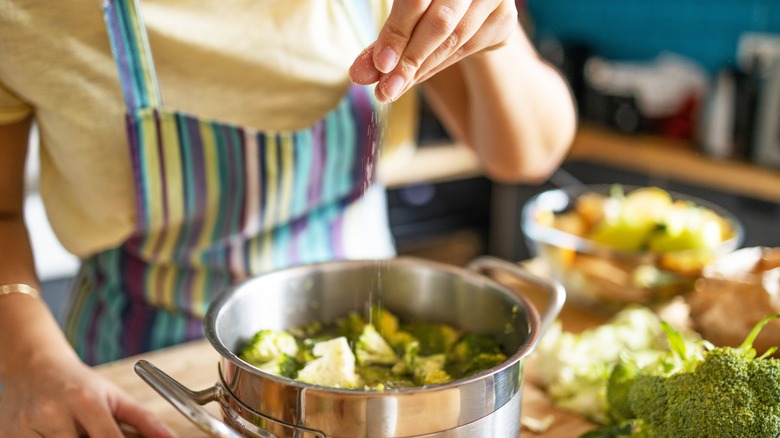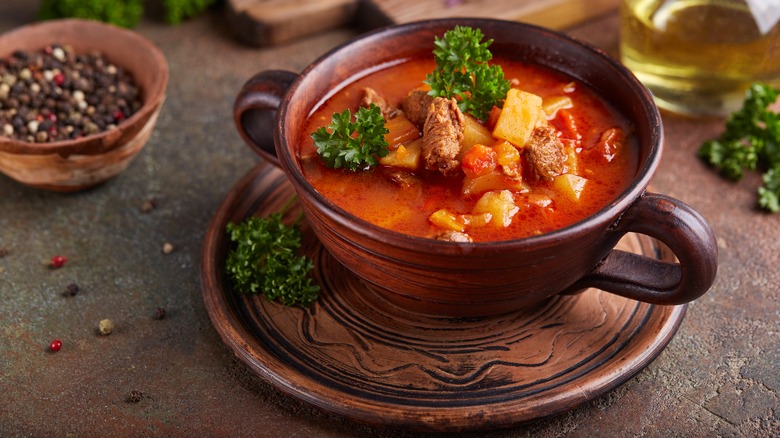Salt Your Stew Immediately For The Best Flavor Outcome
Hearty stews have a warm and nourishing quality that is downright magical. The characteristic low and slow preparation creates a beautiful merging of flavors, pairing vegetables, meats, and spices into a single bowl. However, seasoning the dish can feel intimidating. The importance of salting is well-known, but pinpointing when to sprinkle on the mineral is much trickier.
For the deepest, most consistently well-seasoned flavor, make sure to salt right when you start cooking. Infusing the aromatics at this stage makes the salt more penetrating, ensuring that each bite is evenly salty. Plus, it'll curtail the formation of an unbalanced crust when the mineral clings exclusively to the outside of vegetables. In fact, if you're only salting at the end, add much less of the mineral to compensate. That way, no matter if it's a French-style beef stew or an all-veggie mushroom creation, no one will be reaching for the shaker.
Salt stews in the beginning for optimal flavor
It's a good idea to give the stew a sprinkle of salt while throwing the cut-up vegetables into the pot. And, if you're first searing chunks of meat, you'll want to salt these, too. They can either be seasoned like vegetables right before combination or dusted onto the meat for at least 45 minutes. Beef will benefit from a pre-salting step, but it necessitates an extended duration to soak in and slow down the moisture accumulation on the outside. So, wait out that prep with a timer to ensure the meat gets an ideal sear.
Additionally, remember there are different methods to integrate salty flavor. After a classic salt seasoning on the beef, an Asian-style stew can get more of the taste through a soy sauce pour. And even if your flavors aren't Southeast Asian-inspired, consider adding fish sauce to your stew for more complexity. There are many routes to ensure a perfectly seasoned final bowl.

